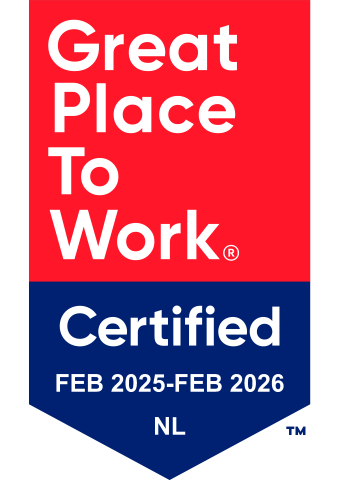What is circular economy?
A circular economy is an economic and industrial system of closed cycles, designed to minimize the loss of value in raw materials, components, and products. With a growing population and rising prosperity, the risk of resource scarcity intensifies, making efficient use of available materials crucial. In a circular economy model, materials and products are shared, reused, repaired, refurbished and rented as much as possible, creating more value and reducing waste. This approach minimizes waste. This system focuses on systems thinking and utilizes renewable energy sources.
The transition from linear to circular economy
A linear economy contrasts with a circular economy. In a linear model, resources are used extensively and discarded after use. Conversely, in a circular economy, resources are optimized throughout their lifecycle. Moving towards a circular economy requires systemic change, including:
- New (business) processes.
- High-quality reuse and recycling based on the R-ladder model.
- Alternative approaches to handling products, such as repairing rather than discarding them.
This shift offers Europe a unique opportunity to transform its economy, fostering sustainable competitive advantages.
Applying the R-ladder in a circular economy
The R-ladder is a commonly used model for adapting to rising procurement costs and resource shortages, categorizing levels of circularity with R1 as the highest level. The strategies are:
- R1: Refuse and Rethink – Eliminate unnecessary materials or products, maximize product usage through sharing platforms, or select multifunctional products.
- R2: Reduce – Minimize resource consumption during production and use.
- R3: Reuse – Give discarded products a second life through reuse platforms.
- R4: Repair, Refurbish, Remanufacture, Repurpose – Extend product life through repair or repurpose old components for new products.
- R5: Recycle – Convert materials into raw forms, like reusing waste wood, coffee grounds, or grass.
- R6: Recover – Use materials for energy recovery through incineration, though this is minimized in a circular economy.
Mapping the circular economy
Transitioning to a circular economy addresses key environmental concerns, including climate change. Extracting raw materials and manufacturing products is energy-intensive, so reducing consumption limits greenhouse gas emissions. It also helps combat resource depletion, which has implications for future generations. In mapping the circular economy, priority is given to repair and reuse, followed by recycling, with waste disposal as a last resort.
Examples of circular economy projects
While materials like paper, steel, and glass are widely recycled, further possibilities exist in areas like e-waste and concrete recycling. E-waste contains rare earth elements and precious metals, while concrete production is a major greenhouse gas contributor. Recycling concrete stock, especially from infrastructure projects, and incorporating modular designs are critical in construction. Circular business models include:
- Car-sharing platforms to reduce resource use and emissions.
- Recycling scarce metals to achieve ecological and economic benefits.
- Pay-per-use models, like leasing office chairs, to lower CO2 emissions across the value chain.
The European Action Plan for Circular Economy
The European Commission’s Circular Economy Action Plan outlines key measures, including making sustainable products the standard, prioritizing high-impact sectors (e.g., Information and communication technology (ICT), construction, batteries, and textiles), reducing waste, and positioning the EU as a global leader in circular economy practices.
Examples of circular economy projects
Example: The Netherlands
The Dutch government targets a fully circular economy by 2050, aiming to halve raw material use by 2030. Early initiatives, such as landfill reduction, have established favorable conditions for the circular economy transition. Dutch expertise in waste segregation and logistics is instrumental both domestically and internationally.
Example: Denmark
Denmark’s 2020-2032 Action Plan for Circular Economy prioritizes reducing waste and managing resources sustainably, with 129 initiatives spanning product design to waste management. Key focus areas include natural resource conservation, enhanced recycling, sustainable biomass use, and circular construction practices. In 2021, two consortia, BusinessReuse and Circle Bank, were funded to create systems for recycled materials, promoting their adoption within the construction industry to support its green transition.
